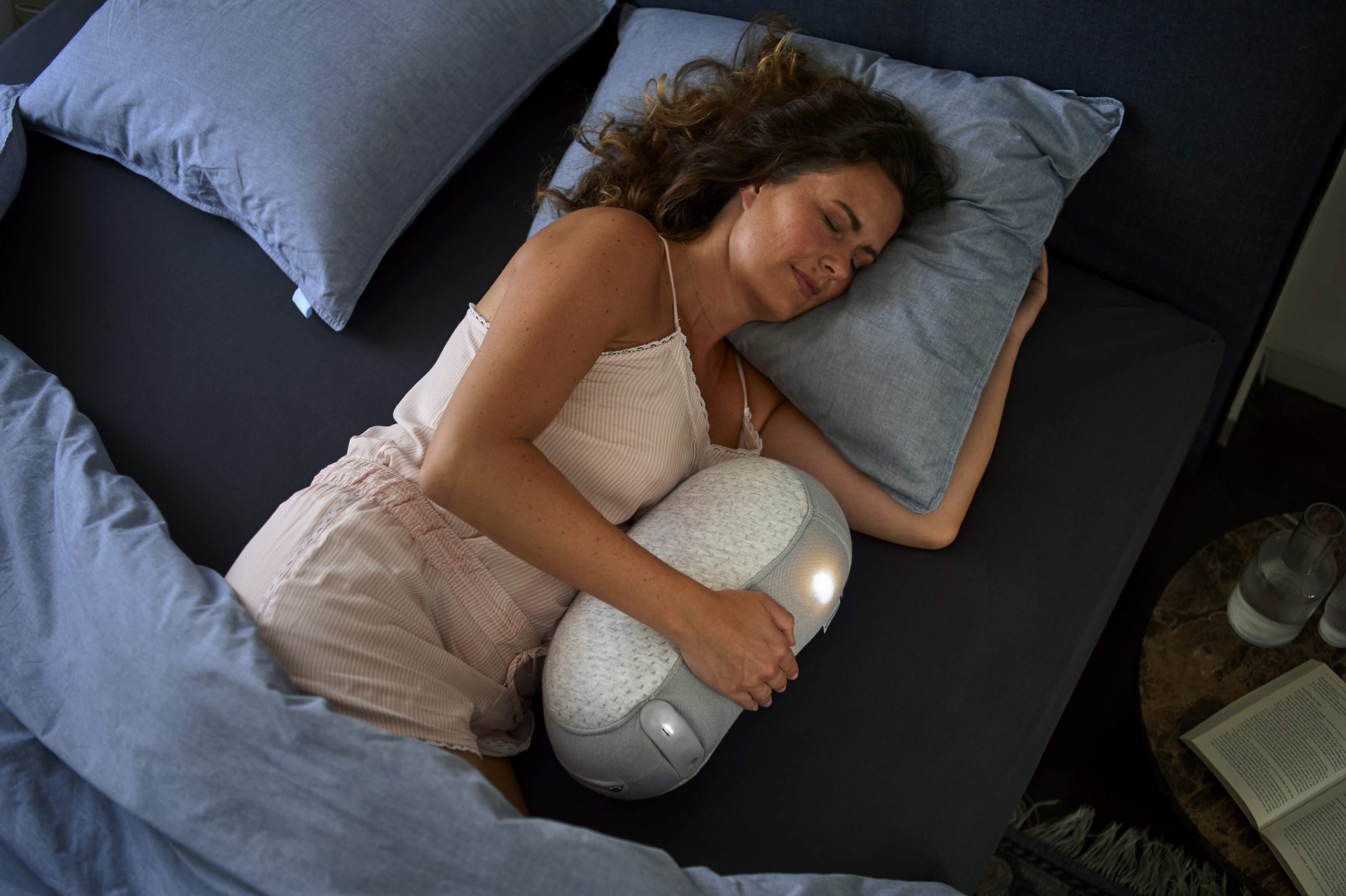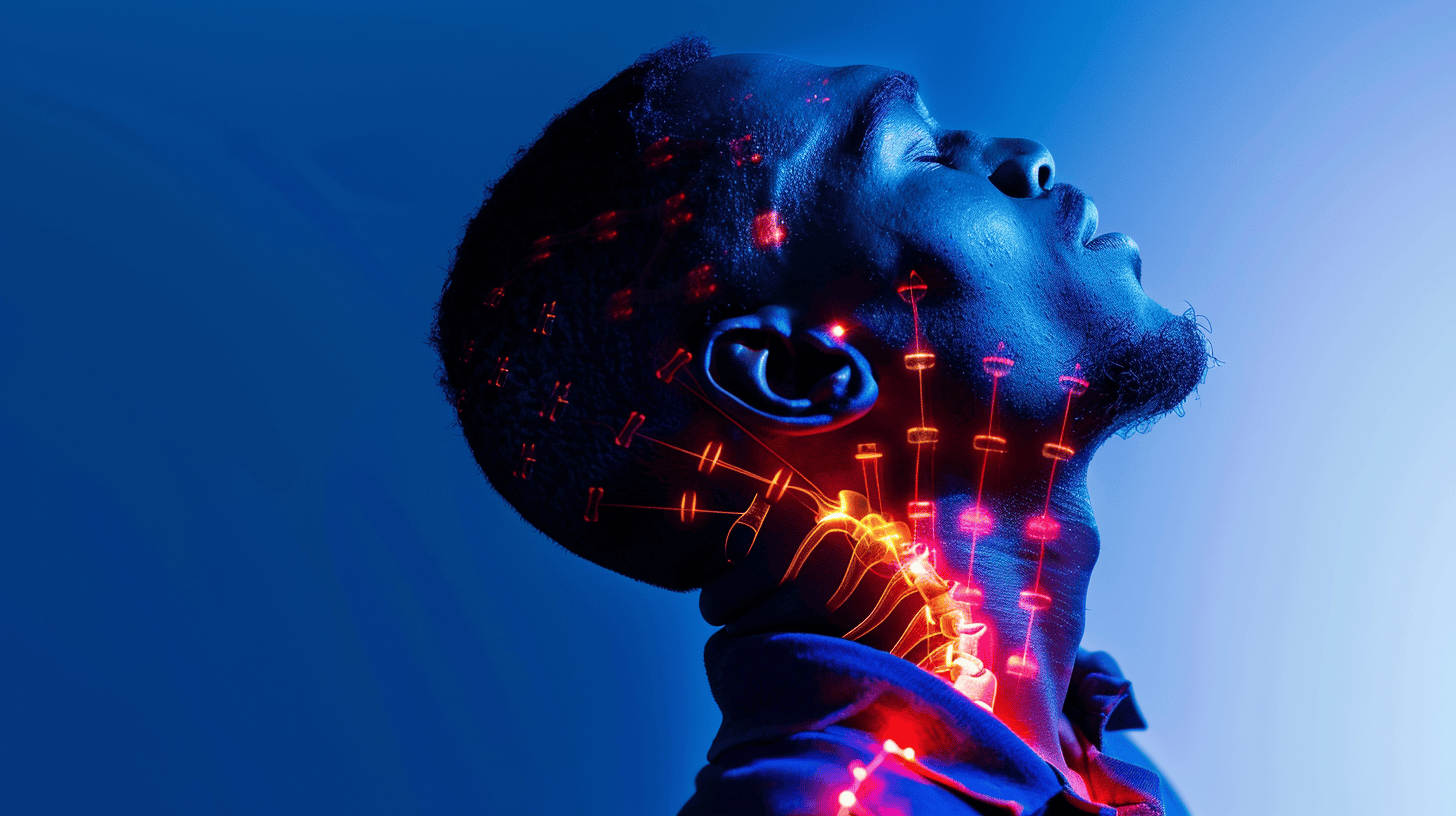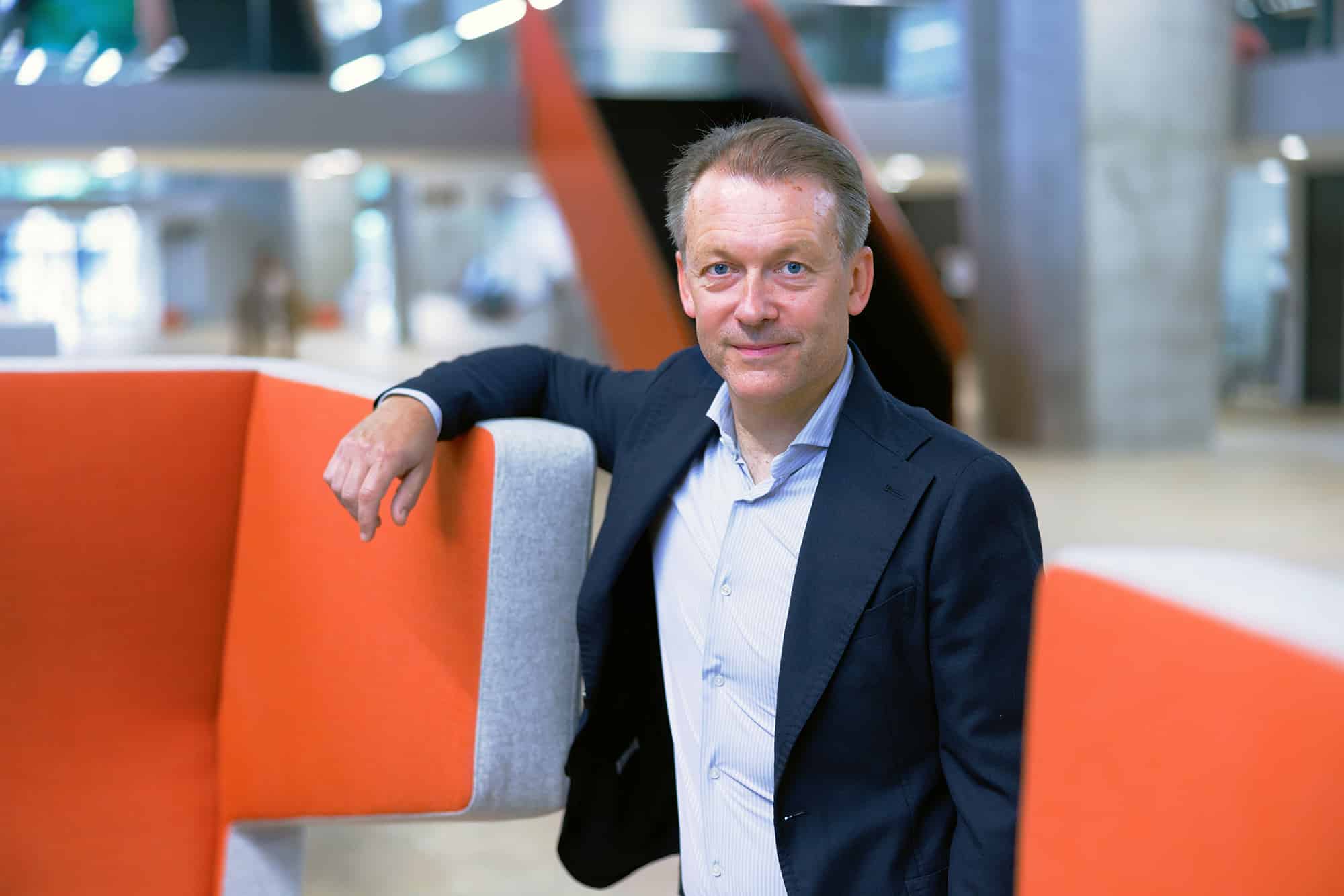
Anxiety, stress and worrying about the coronavirus keeps many people from sleeping well these days. But even without the virus, about 22 % of Dutch people aged 12 years and older find it difficult to get to sleep or sleep throughout the night. Approximately 8 % of Dutch people suffer from chronic sleep deprivation (sleeping badly for three days or more each week for at least three consecutive weeks). Worldwide this figure is between 10 and 20%. All those sleepless nights can cause irritability, depression and other health problems. In order to prevent these conditions and to help people get a good night’s sleep without medication, four students from Delft University of Technology (TU Delft) came up with Somnox, a sleep robot that helps people sleep. IO spoke with Julian Jagtenberg, one of the founders.
How did you come up with the idea?
“I’ve seen with my own eyes what sleep deprivation does to you. It can go so far that your work or school suffers as a result. Medication prescribed by your doctor is effective, but it will harm you in the long run. You become dependent on that. At the Cognitive Robotics Department (CoR) , a part of TU Delft where various disciplines come together, we have developed a prototype that helps people without pills. We realized that it was no longer an academic project aimed at helping those close to us, but that many more people could benefit from it. Sleeping problems are ubiquitous and we believe that we can help people, especially in these hectic times.”
Can you explain how the robot helps you sleep?
“There are several accelerometers inside the robot that measure the movements of your chest. It also contains a CO2 sensor that measures your breathing; e.g., if you exhale, there is more CO2 in the air. The robot adjusts itself to your breathing. The robot gradually guides you to a slower breathing rate, you unconsciously take over its rhythm. This is known as mirroring. The remarkable thing about this is that it is connected to your heartbeat, so your heartbeat drops as well because of this slower breathing rate.”
Don’t people think it’s a bit weird to sleep with a robot?
“When you think of a robot, of course, you think of something metallic, a piece of technology. In fact, our robot is that too, but it is soft technology. Literally. In the beginning we occasionally got some wacky reactions, but these also brought us a lot of media attention. So, the knife cuts both ways. After all, it’s due to that kind of attention that we’ve been able to grow so fast.”
“We started on Kickstarter with crowdfunding and then partnered with Auping for the production and distribution. It’s a great opportunity for us as they’re a well-known name. Plus, the fact that they’ve included us in their brand says something. Since May last year you can buy our robot in The Netherlands, England and the US.”
What do you have to be good at in order to run a start-up successfully?
“In the beginning, you’ve got to be a kind of chameleon. There’s all sorts of things coming at you that you don’t have a clue about. I think the most important thing is that you are confident about your success. If you have any doubts, you shouldn’t even start as far as I’m concerned. Trust in teamwork, acknowledge your weaknesses and gather people around you who are better at something than you are. I often see founders who think they can do everything on their own. There are engineers in Delft who can make a great product, but bringing a product to the market is something completely different.”
Have you ever had any sleepless nights yourself due to setbacks?
“Sure. Once a setback was sorted out, it seemed like the next one followed on its heels. During our Kickstarter campaign, the idea was to deliver the product within nine months. But in the end it took much longer. You lie awake because of that. You’ve promised people something, set up production lines and in the meantime, you’re looking for funding to keep your company afloat a little longer. But there is no way back, otherwise you will go bankrupt and end up in debt.”
“Since there was no test protocol in existence for our product at that time, it had to be drawn up before we could obtain a CE marking. As a result, our customers had to wait longer for the product. That was very annoying, but on the other hand it also gave us a degree of confidence. This product category did not yet exist, a sign to us that we are working on something innovative that is incomparable to anything else.”
Is that also what you’re most proud of?
“Actually, no. I see that as something that had to be done. I’m really proud when I read reviews or talk to people we’ve helped. When they say they sleep better and feel less depressed. It sounds really stupid to say that, but these are moments that really give me goosebumps. That’s the higher purpose we’re all working for, it’s why we take risks.”
Where will you be five years from now?
“Our aim on the horizon is to help 100 million people worldwide sleep better between now and 2030. That doesn’t mean we’ll have sold loads of robots by then, as we’re also focusing on education and exercises designed to help people sleep better. We have also just launched a new product that supports the sleep robot. A weighted blanket that is very soothing and which offers a sense of security.”
You can read more articles about start-ups here.








